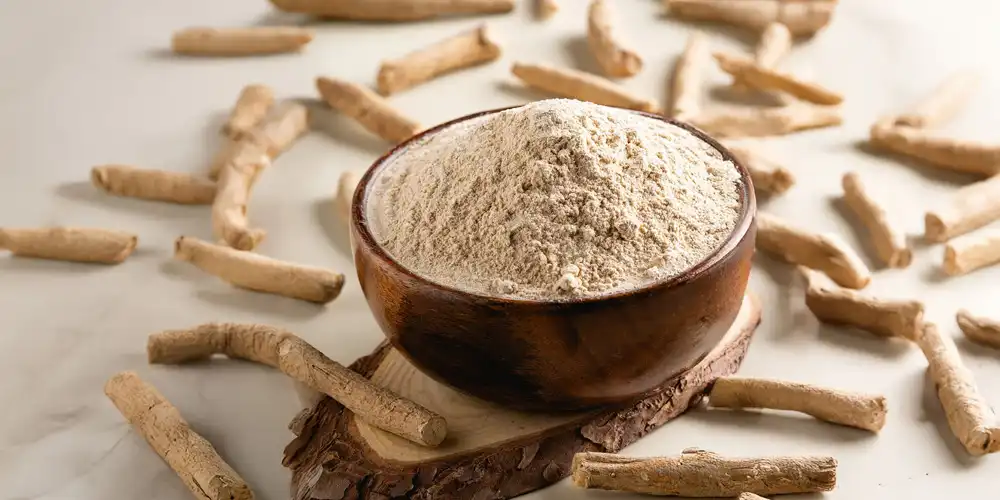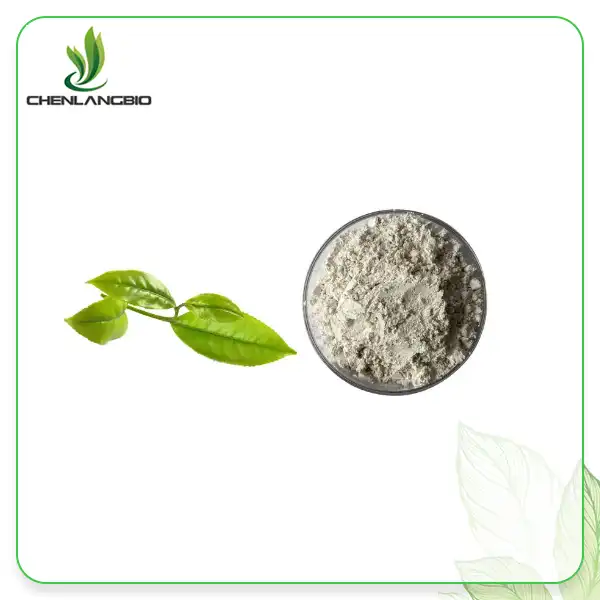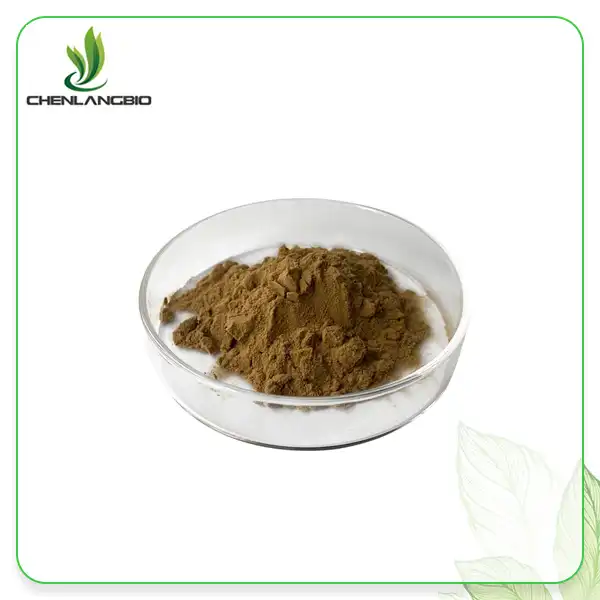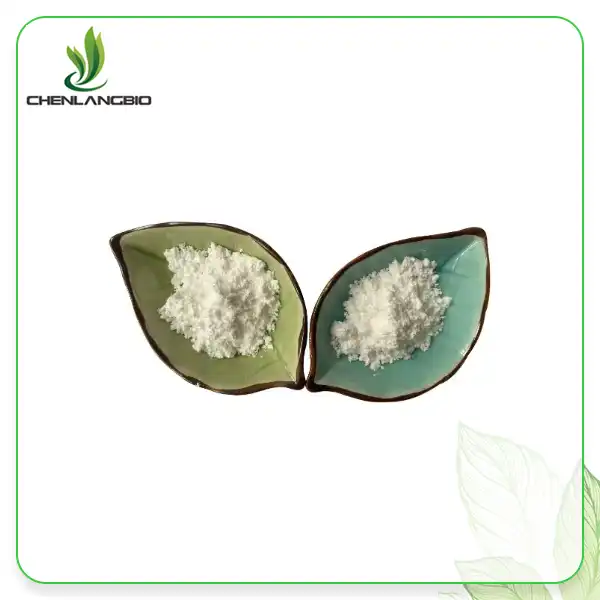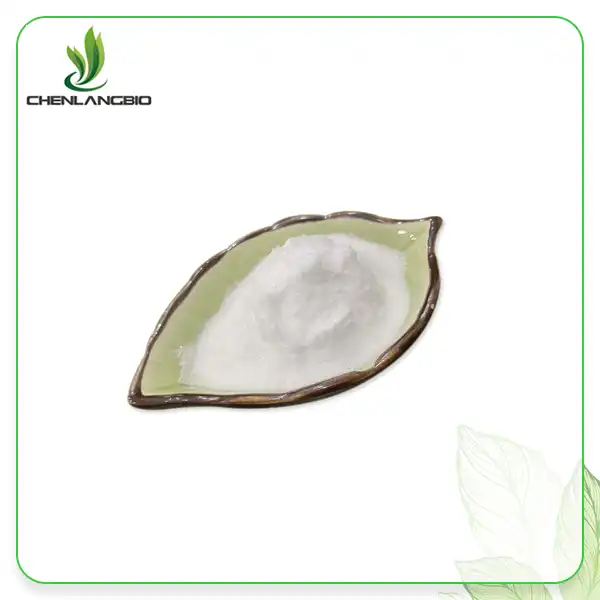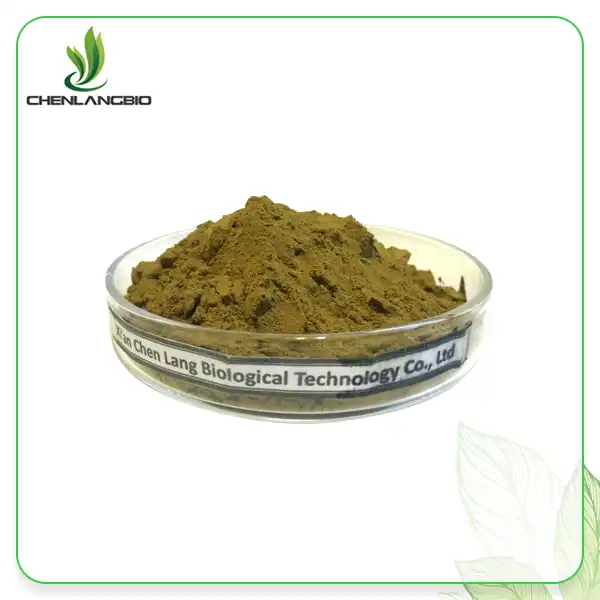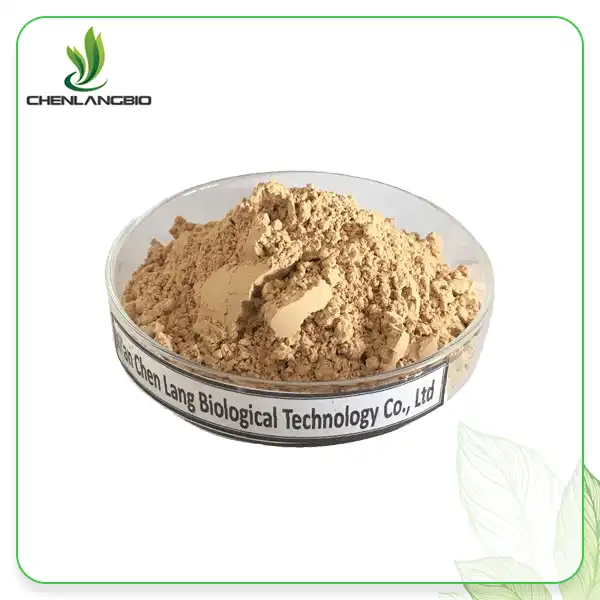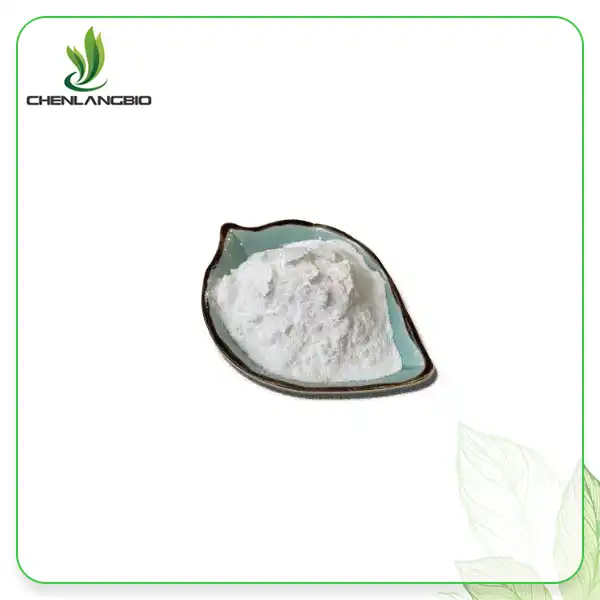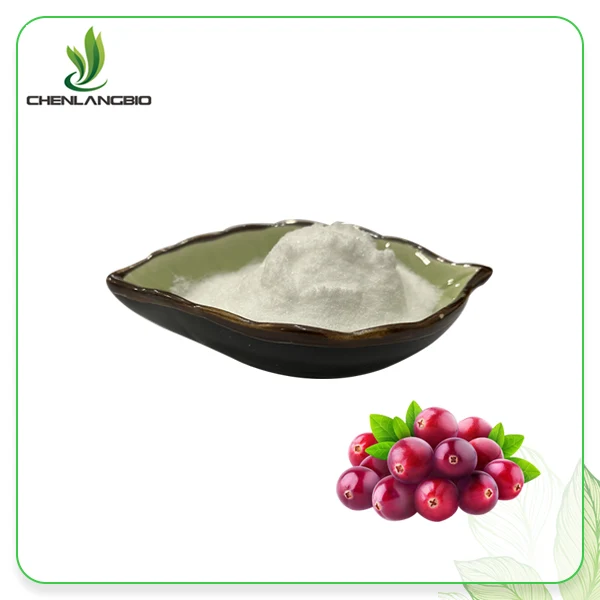Kaempferol: Unveiling Its Anti-inflammatory Properties for Therapeutic Innovation
2025-10-24 08:43:33
In today's healthcare landscape, chronic inflammatory diseases continue to plague millions worldwide, driving researchers to seek innovative natural therapeutic solutions. Kaempferol, a powerful polyphenolic compound found abundantly in fruits and vegetables, emerges as a groundbreaking anti-inflammatory agent with immense therapeutic potential. This bioactive flavonoid offers hope for those struggling with inflammatory conditions, cancer risk reduction, and oxidative stress-related disorders. Understanding Kaempferol's mechanisms and applications could revolutionize how we approach modern therapeutic interventions, providing safer, more effective treatment alternatives derived from nature's pharmacy.
Understanding Kaempferol: The Multifaceted Flavonoid
Kaempferol represents one of nature's most versatile therapeutic compounds, classified as a flavonol within the larger flavonoid family. This remarkable polyphenol antioxidant demonstrates exceptional bioactivity across multiple physiological systems, making it an invaluable component in modern nutritional and pharmaceutical applications. The compound's molecular structure (C15H10O6) with a molecular weight of 286.23 and CAS number 520-18-3 enables its unique therapeutic properties, particularly its potent anti-inflammatory and antioxidant capabilities.
-
Chemical Properties and Natural Sources
Kaempferol powder, also known as Kaempferol 3-glucorhamnoside, exhibits distinctive solubility characteristics that influence its bioavailability and therapeutic applications. While slightly soluble in water, this flavonoid readily dissolves in hot ethanol, ether, and DMSO, making it suitable for various formulation approaches. The compound primarily derives from the rhizome of Kaempferol galanga L, though it's widely distributed across numerous plant species including tea, broccoli, witch hazel, propolis, and grapefruit. The natural abundance of Kaempferol in everyday foods and beverages makes it an accessible therapeutic option for health-conscious consumers. Its presence in commonly consumed vegetables and fruits ensures that individuals can incorporate this beneficial compound into their daily nutritional regimen. The widespread availability of Kaempferol-rich foods also supports the growing demand for natural health solutions, positioning this flavonoid as a bridge between traditional nutrition and modern therapeutic applications.
Kaempferol's Anti-Inflammatory Mechanisms
The anti-inflammatory properties of Kaempferol operate through sophisticated molecular pathways that target key inflammatory mediators and oxidative stress markers. Kaempferol effectively inhibits the production of key inflammatory mediators, including cytokines and enzymes such as COX-2 and iNOS, while also targeting oxidative stress pathways like Nrf2 activation. This comprehensive approach to inflammation management sets Kaempferol apart from synthetic alternatives that often target single pathways.
-
Molecular Pathways and Cellular Effects
Research demonstrates that Kaempferol modulates multiple pro-inflammatory signaling cascades, including NF-κB, p38MAPK, and AKT pathways. These molecular interventions result in reduced production of inflammatory cytokines, decreased oxidative stress, and enhanced cellular protective mechanisms. The compound's ability to activate Nrf2 pathways further amplifies its antioxidant effects, creating a synergistic approach to inflammation control that addresses both immediate inflammatory responses and long-term cellular protection. The therapeutic significance of these mechanisms extends beyond simple inflammation reduction. By targeting multiple pathways simultaneously, Kaempferol powder provides comprehensive cellular protection that may prevent the development of chronic inflammatory conditions. This multi-target approach aligns with modern pharmaceutical trends toward polypharmacology, where single compounds address multiple therapeutic targets for enhanced efficacy and reduced side effects.
-
Clinical Applications in Inflammatory Diseases
Modern clinical research increasingly validates Kaempferol's potential in treating various inflammatory conditions. Kaempferol, which is present in many kinds of vegetable foods and herbal medicines, can improve the chronic inflammation symptoms of arthritis. This clinical evidence supports the compound's integration into therapeutic protocols for autoimmune and inflammatory disorders. The compound's effectiveness in rheumatoid arthritis treatment demonstrates its potential for addressing complex inflammatory diseases that traditionally require harsh pharmaceutical interventions. By providing natural anti-inflammatory support, Kaempferol powder offers patients an opportunity to reduce their reliance on synthetic drugs while maintaining therapeutic efficacy. This natural approach also minimizes the risk of adverse effects commonly associated with long-term anti-inflammatory medication use.
Cancer Prevention and Therapeutic Applications
Kaempferol's anti-cancer properties represent one of its most significant therapeutic applications, with extensive research supporting its role in cancer prevention and treatment support. The compound functions as a chemopreventive agent, actively inhibiting cancer cell formation while promoting apoptosis in existing malignant cells. This dual mechanism makes Kaempferol particularly valuable in comprehensive cancer prevention strategies and adjunctive treatment protocols.
-
Mechanistic Cancer Protection
The flavonoid's cancer-fighting capabilities stem from its ability to induce oxidative stress specifically in cancer cells while protecting healthy tissues. Studies demonstrate that Kaempferol induces apoptosis in glioblastoma cells through targeted oxidative stress mechanisms, selectively eliminating malignant cells without harming normal cellular function. This selective toxicity represents a significant advantage over conventional chemotherapy approaches that often damage healthy tissues alongside cancerous ones. Research consistently shows that long-term Kaempferol consumption correlates with reduced cancer risk across multiple cancer types. The compound's ability to inhibit cancer cell proliferation, prevent metastasis, and support natural tumor suppression mechanisms positions it as a valuable component in comprehensive cancer prevention protocols. For individuals at high cancer risk or those seeking natural prevention strategies, Kaempferol powder offers evidence-based protection with minimal side effects.
-
Integration with Conventional Cancer Care
Healthcare providers increasingly recognize Kaempferol's potential as an adjunctive therapy in conventional cancer treatment protocols. The compound's ability to enhance chemotherapy effectiveness while reducing treatment-related side effects makes it an attractive option for integrative oncology approaches. Patients undergoing conventional cancer treatment may benefit from Kaempferol supplementation to support their body's natural defense mechanisms and improve treatment tolerance. The flavonoid's protective effects extend beyond direct anti-cancer activity to include support for immune system function and overall cellular health during cancer treatment. This comprehensive support system can improve patient outcomes and quality of life throughout the treatment process. Healthcare providers working with cancer patients should consider Kaempferol powder as part of a holistic treatment approach that combines conventional medicine with evidence-based natural therapeutics.
Metabolic Health and Diabetes Management
Emerging research reveals Kaempferol's significant potential in metabolic health management, particularly in diabetes prevention and treatment. The compound demonstrates insulin-sensitizing properties that may rival conventional diabetes medications while offering superior safety profiles. Studies indicate that Kaempferol powder acts as an agonist with hypoglycemic drugs like rosiglitazone but exhibits weaker adverse reactions, positioning it as a promising next-generation insulin sensitizer.
-
Glucose Regulation Mechanisms
Kaempferol's metabolic benefits stem from its ability to enhance insulin sensitivity and improve glucose uptake in peripheral tissues. The compound activates key metabolic pathways that promote efficient glucose utilization while reducing insulin resistance, fundamental factors in diabetes development and progression. These mechanisms make Kaempferol particularly valuable for individuals with prediabetes or early-stage type 2 diabetes seeking natural management options. The flavonoid's effects on metabolic health extend beyond glucose regulation to include lipid metabolism improvement and weight management support. Research suggests that Kaempferol can reduce adipose tissue development and promote healthy body composition, addressing multiple risk factors associated with metabolic syndrome. This comprehensive metabolic support makes Kaempferol powder an valuable addition to diabetes prevention and management protocols.
Quality Manufacturing and Standardization
The therapeutic potential of Kaempferol depends heavily on product quality, purity, and standardization. High-quality Kaempferol powder requires sophisticated extraction and purification processes that preserve the compound's bioactive properties while ensuring consistent potency. Advanced analytical techniques, including HPLC testing, verify product identity and purity, ensuring that consumers receive therapeutic-grade Kaempferol suitable for health applications.
-
Advanced Extraction Technologies
Modern Kaempferol production utilizes cutting-edge extraction technologies that maximize yield while preserving bioactivity. Dynamic countercurrent extraction, membrane separation technology, and microwave-assisted extraction techniques enable efficient isolation of pure Kaempferol from plant sources. These advanced methods ensure that the final product maintains optimal therapeutic properties while meeting stringent quality standards required for pharmaceutical and nutraceutical applications. The implementation of spray drying and other advanced processing technologies ensures stable, easily formulated Kaempferol powder that retains its bioactive properties throughout storage and use. These technological advances have made high-quality Kaempferol more accessible to manufacturers and consumers while maintaining the compound's therapeutic integrity. Quality manufacturers invest in these advanced technologies to deliver consistently effective Kaempferol products that meet growing market demand.
Conclusion
Kaempferol emerges as a remarkable therapeutic compound that bridges traditional natural medicine with modern pharmaceutical innovation. Its comprehensive anti-inflammatory, anti-cancer, and metabolic benefits position it as a versatile tool for addressing multiple health challenges simultaneously. The compound's excellent safety profile and natural origin make it an attractive alternative or complement to conventional pharmaceutical interventions, offering hope for individuals seeking effective, natural health solutions.
Cooperate with Xi An Chen Lang Bio Tech Co., Ltd.
As a leading China Kaempferol manufacturer and China Kaempferol supplier, Xi An Chen Lang Bio Tech Co., Ltd. stands at the forefront of botanical extract innovation. Our state-of-the-art facilities produce premium High Quality Kaempferol powder using advanced extraction technologies and rigorous quality control measures. With over 15 years of extraction experience, our company maintains 300-500kg inventory for immediate delivery, ensuring our global clients receive consistent, high-purity products.
Our comprehensive quality assurance program includes HPLC-ELSD analysis, atomic fluorescence spectroscopy, and UV spectrophotometry to guarantee product excellence. As an established China Kaempferol wholesale provider, we serve over 100 countries with competitive pricing and outstanding customer service. Our annual production capacity of 600 tons ensures reliable supply for both large-scale manufacturers and specialized applications. Whether you're seeking Kaempferol for sale or require custom formulations, our experienced team provides innovative solutions tailored to your specific needs.
For immediate inquiries about our High Quality Kaempferol products and competitive Kaempferol price, contact our professional team at admin@chenlangbio.com. Discover why industry leaders choose our China Kaempferol factory for their botanical extract requirements.
FAQ
Q: What makes Kaempferol effective for anti-inflammatory applications?
A: Kaempferol inhibits key inflammatory mediators like COX-2 and iNOS while activating antioxidant pathways, providing comprehensive inflammation control through multiple mechanisms.
Q: How does Kaempferol compare to synthetic anti-inflammatory drugs?
A: Kaempferol offers natural anti-inflammatory benefits with minimal side effects, targeting multiple pathways simultaneously unlike synthetic drugs that often affect single targets.
Q: What is the recommended dosage for Kaempferol supplementation?
A: Dosage varies based on application and individual needs. Consult healthcare providers for personalized recommendations based on specific health goals and conditions.
Q: Can Kaempferol be combined with conventional cancer treatments?
A: Research suggests Kaempferol may enhance conventional cancer therapy effectiveness while reducing side effects, but always consult oncologists before combining treatments.
References
1. Ahmad A, Kaleem M, Ahmed Z, Shafiq H. "Therapeutic potential of flavonoids and their mechanism of action against microbial and viral infections—A review." Food Chemistry, 2015.
2. Calderon-Montano JM, Burgos-Moron E, Perez-Guerrero C, Lopez-Lazaro M. "A review on the dietary flavonoid kaempferol." Mini Reviews in Medicinal Chemistry, 2011.
3. García-Mediavilla V, Crespo I, Collado PS, Esteller A, Sánchez-Campos S, Tuñón MJ, González-Gallego J. "The anti-inflammatory flavones quercetin and kaempferol cause inhibition of inducible nitric oxide synthase, cyclooxygenase-2 and reactive C-protein, and down-regulation of the nuclear factor kappaB pathway in Chang Liver cells." European Journal of Pharmacology, 2007.
4. Imran M, Rauf A, Abu-Izneid T, Nadeem M, Shariati MA, Khan IA, Imran A, Orhan IE, Rizwan M, Atif M, Gondal TA, Mubarak MS. "Kaempferol: A key emphasis to its anticancer potential." Molecules, 2019.
Send Inquiry
Related Industry Knowledge
- Buy 5 Alpha Hydroxy Laxogenin Powder in Bulk: High Purity Supply from China Manufacturer
- What are the Benefits of 3 O Ethyl Ascorbic Acid?
- Top 5 Benefits of Laminaria Japonica Extract for Glowing Skin
- Top 6 Applications for Oleuropein Powder in 2025
- Should PQQ be Taken with Coenzyme Q10 (CoQ10)?
- Is Kopexil Effective for Treating Hair Loss?
- What is Copper PCA
- Ajuga Turkestanica Extract Essential Fitness Turkesterone Supplements
- Magnesium Ascorbyl Phosphate Benefits for Skin
- Is Resveratrol for Skin

